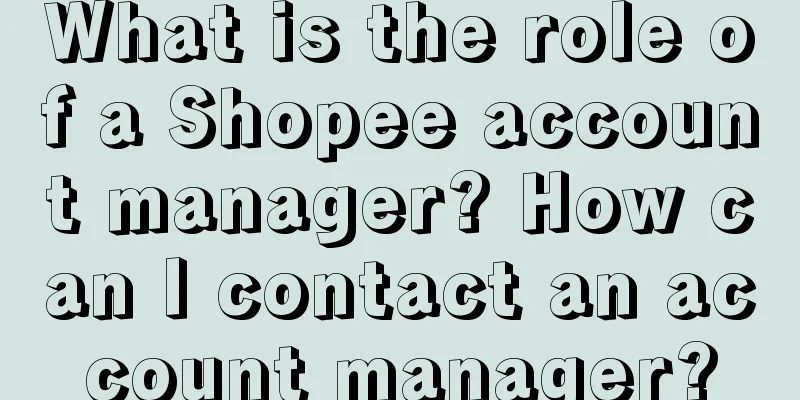New brand, old problems

01After experiencing their highlights in the past two years, new consumer brands such as Nayuki's Tea, Heytea, Perfect Diary, Pop Mart, Huaxizi, Linqingxuan, and Zhong Xuegao have become collectively silent, as if they had fallen from the altar overnight and become the "target of public criticism." Clearly, they were the "hot cakes" that the investment circle was scrambling to grab one second, but the next second they seemed to have become "poison" that everyone avoided. What went wrong with them? What serious impact did the epidemic have on them? Did the new consumer groups begin to "like the new and dislike the old"? Traditional consumer brands began to use their corporate scale and financial advantages to launch a "massive counterattack." Coca-Cola is still the strong Coke, and Nestlé is still the world's number one Nestlé. "Hot or not" is just a phenomenon, and the phenomenon is never important: a thing will not become valuable from being worthless just because it is "hot"; nor will it lose its value just because it is "not hot"; what is really important is to understand the essence behind the phenomenon. What is wrong with these new consumer brands? 02In August 2019, Diaoye, who has a bit of literary talent and can grasp hot topics, published an article on his official account titled "Don't doubt it, the huge wave of "new consumption" is coming!" In it, he rewrote "In the Internet age, every industry is worth redoing" into "Every consumer product is worth redoing". This sentence has also become a slogan like a "Bible" in the process of waving the flag for new consumption, and has been mentioned repeatedly. In Diao Ye’s article, a point of view was put forward: the formula of "new media (Douyin, Kuaishou, and Xiaobian) + new channels (social/live streaming e-commerce) + new products (ultimate cost-effectiveness) = new (consumer) brand" . This point of view has also become a universal rule that subsequent new consumer companies have followed. 03What capital fears is the lack of hot spots, and what entrepreneurs fear is the lack of concepts. In this way, new consumption entrepreneurs and investors can easily get all of this; "Xiaohongshu emotionally plants grass, Zhihu rationally endorses, Douyin and Kuaishou live broadcast to sell goods, and Tmall takes over the traffic." People who smelled the scent of wealth rushed in and copied a large number of so-called "new consumption" companies; since 2020, more than 300 new consumption companies have obtained financing, an average of one company per day. What needs to be understood is that new media, new channels, or the ultimate cost-effectiveness of products brought about by supply chain advantages are definitely not the fundamental factors that determine the success of consumer companies; the huge opportunities in the consumer industry definitely do not depend on these factors. 04Be it new media, new channels, or the ultimate cost-effectiveness of products brought about by the advantages of the new supply chain; for any outstanding consumer company in the world, it should only be a carrier for information dissemination, a carrier for product sales, and a carrier for satisfying user needs. Being able to make good use of these carriers: being able to do media placement, channel sales, and product production are just the most basic skills for an excellent consumer company. If someone thinks that as long as a company does the above basic skills well and seizes these dividends, it can succeed and even defeat the giants; that is equivalent to saying that as long as Procter & Gamble, Coca-Cola, Unilever, and L'Oreal make any product, they can be successful, but this is obviously ridiculous. Because reality tells us that these excellent companies in the world that are the best at marketing, channels, and products have used almost the same methodologies that they once successfully used to create their most well-known brands, and have produced too many failed products in the past hundred years. 05If a consumer goods company feels that the expansion of its information channels from “TV advertising” to “video websites” to “social media” and “short videos” and its sales channels from “large supermarkets” to “convenience stores”, “comprehensive e-commerce” to “vertical e-commerce”, “social e-commerce” and “live streaming e-commerce” can shake its foundation, then it is definitely not a qualified consumer goods company. To put it another way: the bonuses of new media and new channels are called bonuses because they are available to all industries and categories from the first day of their birth. Therefore, if the core competitiveness of any enterprise comes from the use of external bonuses, it is doomed to not be a long-term successful enterprise. The core competitiveness of a truly excellent consumer goods enterprise must come from within, and it is doomed to succeed with or without these bonuses. 06Lululemon, with a market value of more than 50 billion US dollars, grew under giants such as Nike and Adidas (in 2016, I emphasized the brand Lululemon in "Circle Business - Finding the Future Way Out for Enterprises"); Olaplex, with a market value of more than 15 billion US dollars, grew under giants such as Procter & Gamble/L'Oreal/Henkel; WhiteClaw, a sales legend with sales exceeding 3 billion US dollars in 2020, has snatched market share from giants such as Budweiser and Pernod Ricard. Is it just relying on dividends? The most well-known first-tier brands in the world today did not appear at the same time. They were established over hundreds of years of business history. In the past 100 years, brands that are considered successful today were established almost every year. Their continuity in the time dimension tells us that the success of consumer companies never depends on external dividends. 07Every time someone feels it is different; this time is different; but the result is often the same every time, there is nothing new under the sun: a similar story has already happened once on the other side of the ocean; since 2012, more than 500 consumer companies have obtained financing in the United States with the DTC concept; but today, less than 1/10 of them have emerged. Less than 1/10 of these companies are successful, and the key to their success is not DTC. However, such an obvious fact, almost common sense in business, is ignored. Whenever new consumption is mentioned, new media and new channels are mentioned. I saw an interview with a popular new consumer founder, who said, "All consumer products are born with channel dividends. The rise of Procter & Gamble was due to the dividends of Wal-Mart's rise in the United States." Such a counterintuitive fallacy, such an easily falsified theory, has been widely used as a code of conduct and copied by more new consumers. As the representative of the world's most successful consumer product company, Procter & Gamble's success is by no means due to the rise of Wal-Mart. 08Misreading business common sense, lacking the most basic respect for the essence of business, trying to start a business with the speculative thinking of "grabbing dividends"; shallow understanding of the essence of consumer goods, 99% of new consumer companies are doomed to be wrong from the moment they are born. Especially in the very mature consumer goods industry. 09There has always been only one core driving force for consumer companies, but most new consumers go against it. The only moat for companies is their understanding of user value. This standard applies to any industry, and the consumer industry is no exception. It can even be said that consumption is the industry that embodies this standard most vividly. Globally, the success of any consumer company we know must come from accurate insights into user needs. Most of the failed products launched by successful large consumer companies also stem from a deviation in their understanding of user value. 10Providing users with a more advanced/better looking/more cost-effective product is not called understanding user value, that is just product design. Understanding user value is the decisive factor, but "understanding user value" is a non-explicit thing and it cannot be presented directly to consumers. It is ultimately presented to consumers through a series of specific external manifestations such as product functions, image design, and advertising. So what is the core that really drives consumption at the explicit level? There is only one correct answer: brand. In hundreds of years of business history, no matter how the business environment evolves, even to this day, the only core factor driving consumer companies has never changed: they must still be driven by brands . 11Many people believe that brand comes first, product first and brand second. As long as the product is good, consumers will recognize it. In the field of consumer goods, there is a classic case: in a blind test between Pepsi and Coca-Cola, consumers participating in the blind test generally felt that Pepsi tasted better than Coca-Cola. What's more interesting is that if the testers were told before the blind test that they were drinking Coca-Cola, then the proportion of people who liked Coca-Cola was 49%. If they were not told, then only 29% of people liked Coca-Cola. But Coca-Cola's sales have always far exceeded Pepsi's in the past 100 years. Simply put, Coca-Cola is definitely not the best-tasting cola. There are certainly many companies that can make cola taste better, but they cannot shake the position of cola. Starbucks is definitely not the best coffee company in the world, IKEA is definitely not the best furniture company in the world, Hermès is definitely not the best-looking bag, Head & Shoulders is definitely not the best shampoo, Budweiser is definitely not the best-tasting beer... Products are only as good as one company's basic skills. 12Consumer goods companies need to regard brand building as their core strategy from the first day of the brand’s birth, in order to truly become a successful company and gain continued support from new consumer groups. 13Brand is the sum of all consumer purchase behaviors and the awakening machine of consumer consciousness. In the consumer goods industry, with the blessing of a brand recognized by consumers, a company will be omnipotent in its field and difficult for competitors to shake. At the same time, brand is also the most fundamental and decisive factor in reducing user decision-making costs. 14To promote a user's consumption behavior, the most important thing is to influence the user's consumption decision. Therefore, most of the efforts of a consumer enterprise are to achieve this goal: invest more in research and development; make more aesthetic designs, find celebrity endorsements, put in a lot of advertising, find KOLs to recommend products, find expert reviews, distribute products through all channels, reduce prices for promotions, provide better services, etc. Almost all the strategies you can think of are aimed at influencing the consumer’s consumption decision. However, it is important to know that 99% of the consumer’s consumption decisions are irrational. It is a process that is influenced by many different factors and has no fixed logic. Many disciplines have even been derived from it: consumer behavior, behavioral economics, consumer psychology, and so on. In other words, consumers will not study your product technology, cost structure, artistic value, calculation of functional utility and price cost model... If you have read "Thinking, Fast and Slow", you will fully understand the human decision-making mechanism. 15The sales of a brand should be composed of "basic market" + "incremental market" . The brand brings the "basic market" and the marketing means bring the "incremental market". This is the state of a healthy consumer brand. For consumer companies, they should focus their core energy on improving the "basic market" instead of investing 99% of their energy in "incremental market". 16To build a brand, you must do these five steps:
For consumer brands or enterprises, "doing the hard but right thing" is not one of the options, but the only option. Too many correct decisions are difficult; most of the so-called easy things are wrong. 17There is nothing new under the sun. To do a good job in new consumption, we must grasp the essence, find the first principles of building a good new consumer brand, and then make full use of the new X to promote the growth of the brand (new groups, new media, new lifestyles, new channels), so that we can truly succeed in the consumer goods track. Otherwise, it will only be a flash in the pan! Author: Liu Yichun Source: WeChat public account "Liu Yichun's Brand Business Innovation (ID: shangyeyiguohui)" |
<<: 2023 Marketing Predictions | CMOs will incorporate customer relationship health into new metrics
>>: Local Life 3.0: Douyin for food delivery, Meituan for video watching
Recommend
What is the method to enter Meikeduo without turnover? How is it?
Now many friends want to do e-commerce, and now ev...
Can wishpb be stopped early? Wish pb operation skills
Wish PB (Product Boost) is a promotional tool on t...
Short drama marketing, honey or poison for brands?
Short drama marketing, once seen as a powerful too...
Charlie Munger: The 30 most important thinking models, thought-provoking, recommended for collection!
The author of this article has selected 30 of Char...
Where can I find an Amazon investment manager? What issues should I solve before registering on Amazon?
As the largest cross-border e-commerce platform, m...
How much does it cost to open a store on Amazon? A summary of Amazon platform fees
To know how much profit you can make on the Amazon...
Automotive marketing has changed
With the rapid development of the times and the co...
Overlord Tea Princess, step on the accelerator
Bawang Cha Ji, a dark horse in the tea industry, h...
It’s scary. Why do all the copywriting nowadays seem to be from the same mother?
This article explores the common problems in moder...
6000-word analysis | What is the secret behind the "five female doctors" that became popular amid controversy?
In the future, oral beauty will become the third l...
How can small and medium-sized consumer brands catch up with the new offline hot battlefield?
This article delves into how small and medium-size...
Spring Festival orders increased 100 times month-on-month. How can WeChat stores seize the opportunity?
During the 2025 Spring Festival, WeChat Stores ach...
Is the fob price in USD or RMB? What fees are included?
If you do cross-border business, you need to under...
With an average daily turnover of 80 million, this industry is taking off and bringing a new profession to the fore
In the past two years, short short plays have quic...
Why I am optimistic about Heytea's opening up to franchising | New interpretation of consumption
Heytea recently opened up for franchising. Is this...









